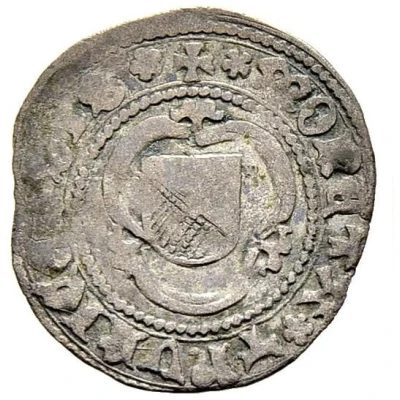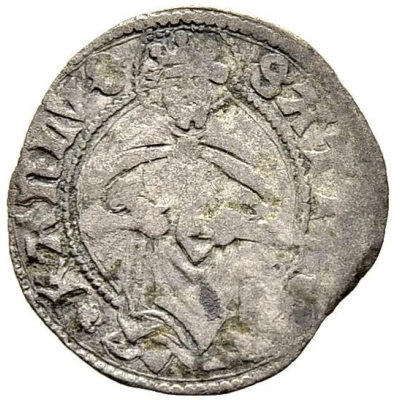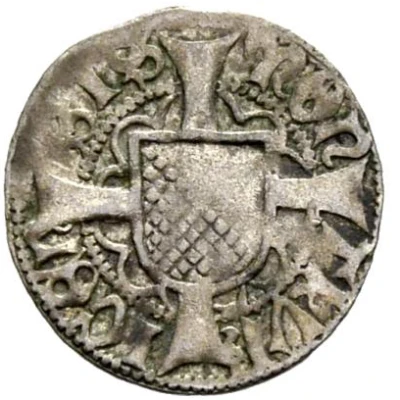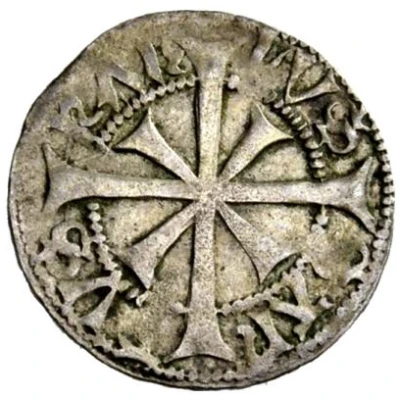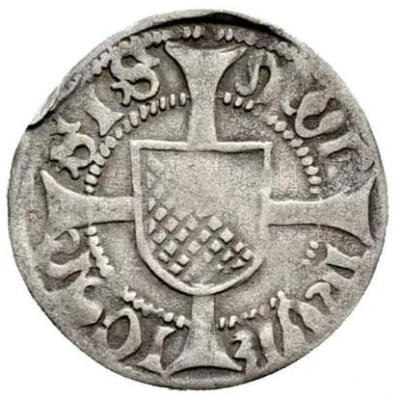
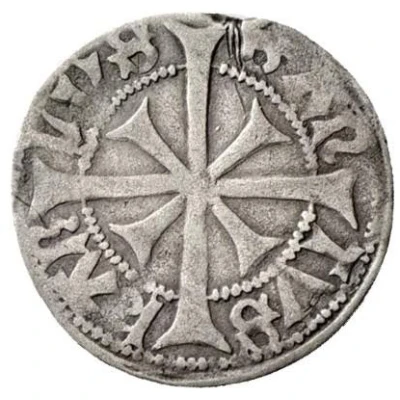

© Sincona AG
Etschkreuzer ND
| Silver (.500) | 0.9 g | 18.7 mm |
| Issuer | City of Zürich |
|---|---|
| Period | Free imperial city (1218-1648) |
| Type | Standard circulation coin |
| Years | 1425-1487 |
| Value | 1 Kreuzer = 8-10 Stäbler (Pfennig) |
| Currency | Pfennig (1417-1487) |
| Composition | Silver (.500) |
| Weight | 0.9 g |
| Diameter | 18.7 mm |
| Shape | Round (irregular) |
| Technique | Hammered |
| Demonetized | Yes |
| Updated | 2024-10-07 |
| Numista | N#242249 |
|---|---|
| Rarity index | 95% |
Reverse
Large cross patteé. Behind, small cross patteé rotated 45 degrees.
Script: Latin (uncial)
Lettering: SAN TVS KAR LVS
Lettering (regular font): SAN TVS KAR LVS
Translation: Saint Charles.
Comment
Varieties of this type are known to exist:• Variant ND (Hürlimann 1108)
Obverse legend: MON THVR ICEN SIS ·
Weight: 0.9 g
Diameter: 18.7 mm
• Variant ND (Hürlimann 1109)
Obverse legend: MON THVR ICEN SIS
Weight: 0.75 - 0.89 g
Diameter: 18.8 mm
⸰ Example #1 (0.89 g; very fine):
Auctioned by Sincona AG, Auction 23, 19-20 May 2015, Lot 3793. Sold for 250 CHF.
© Sincona AG
Interesting fact
One interesting fact about the Etschkreuzer coin is that it was used as a form of currency in the City of Zurich during the 15th century, and its design features a unique blend of Christian and pagan symbols. The coin's obverse side depicts the image of a saint, while the reverse side features a depiction of a tree, which was a common symbol in pre-Christian Swiss mythology. This blending of religious and cultural symbols reflects the complex history and cultural exchange of the region during that time period.
